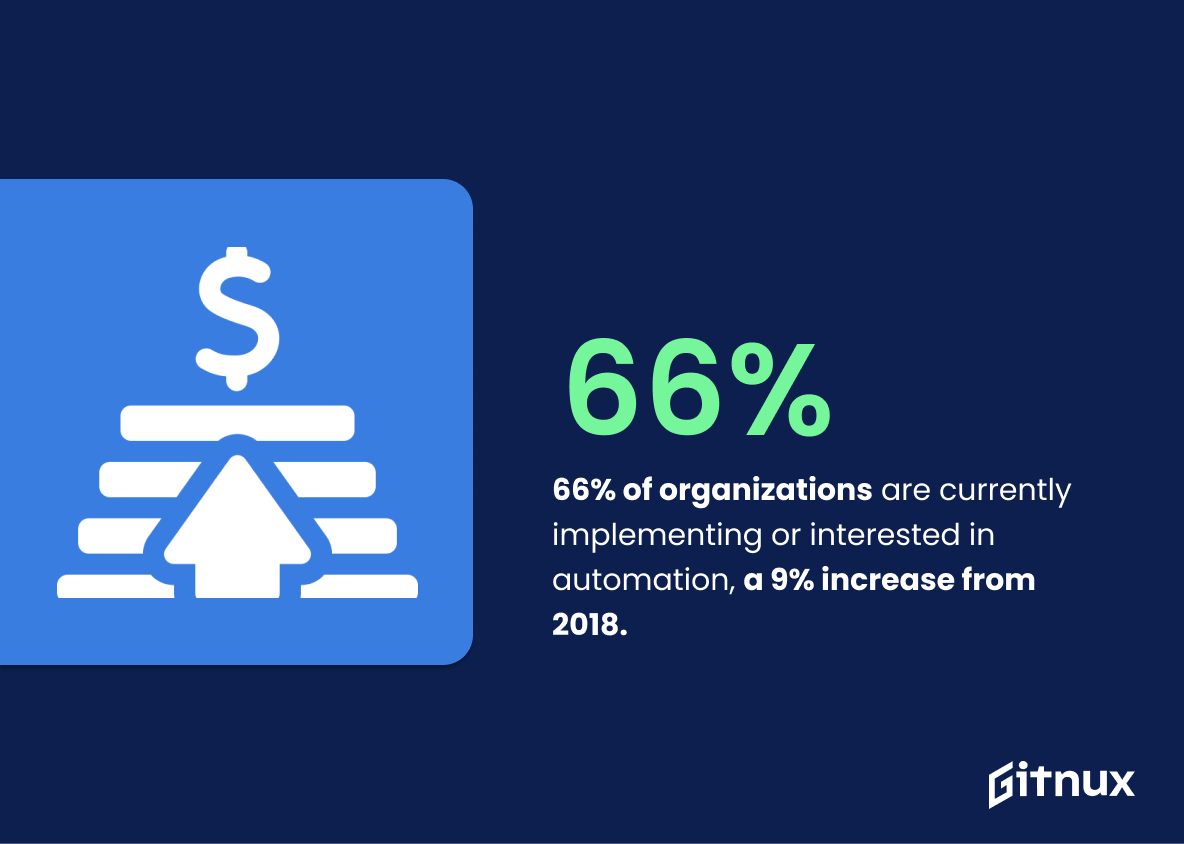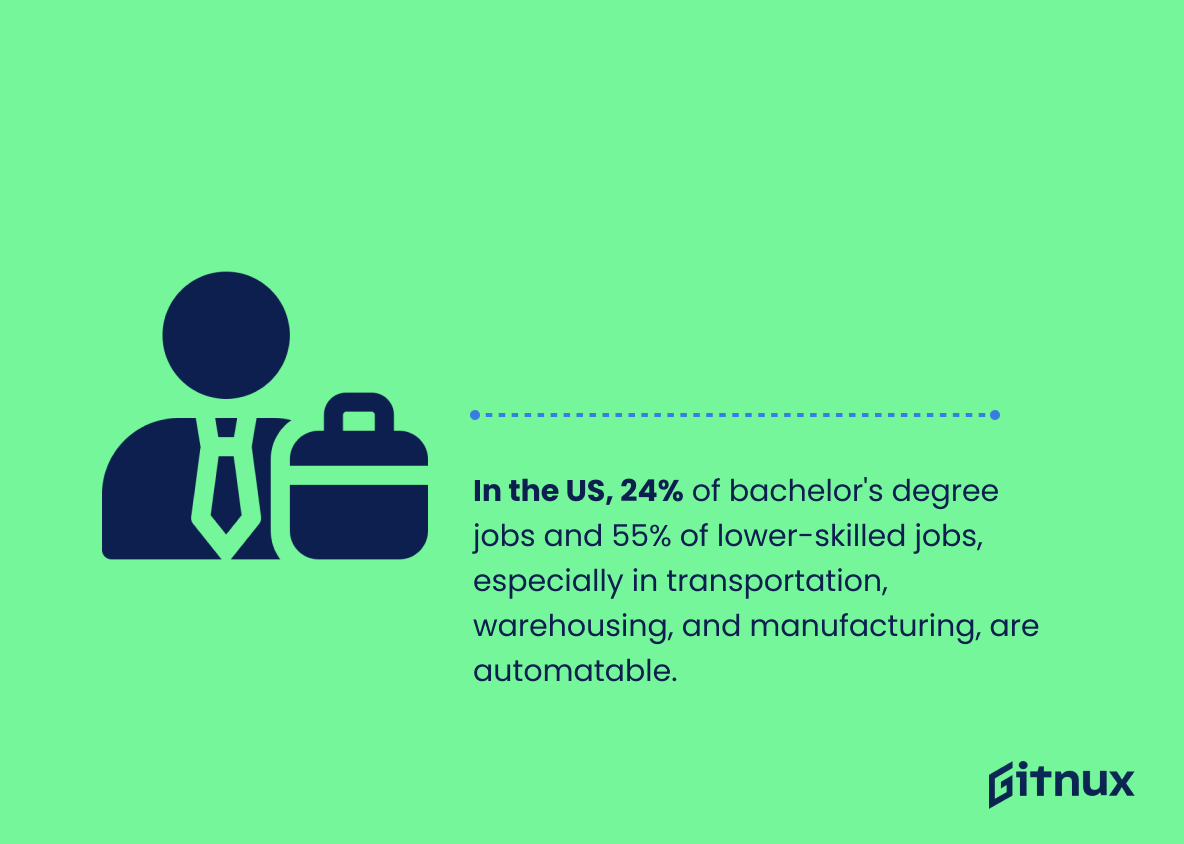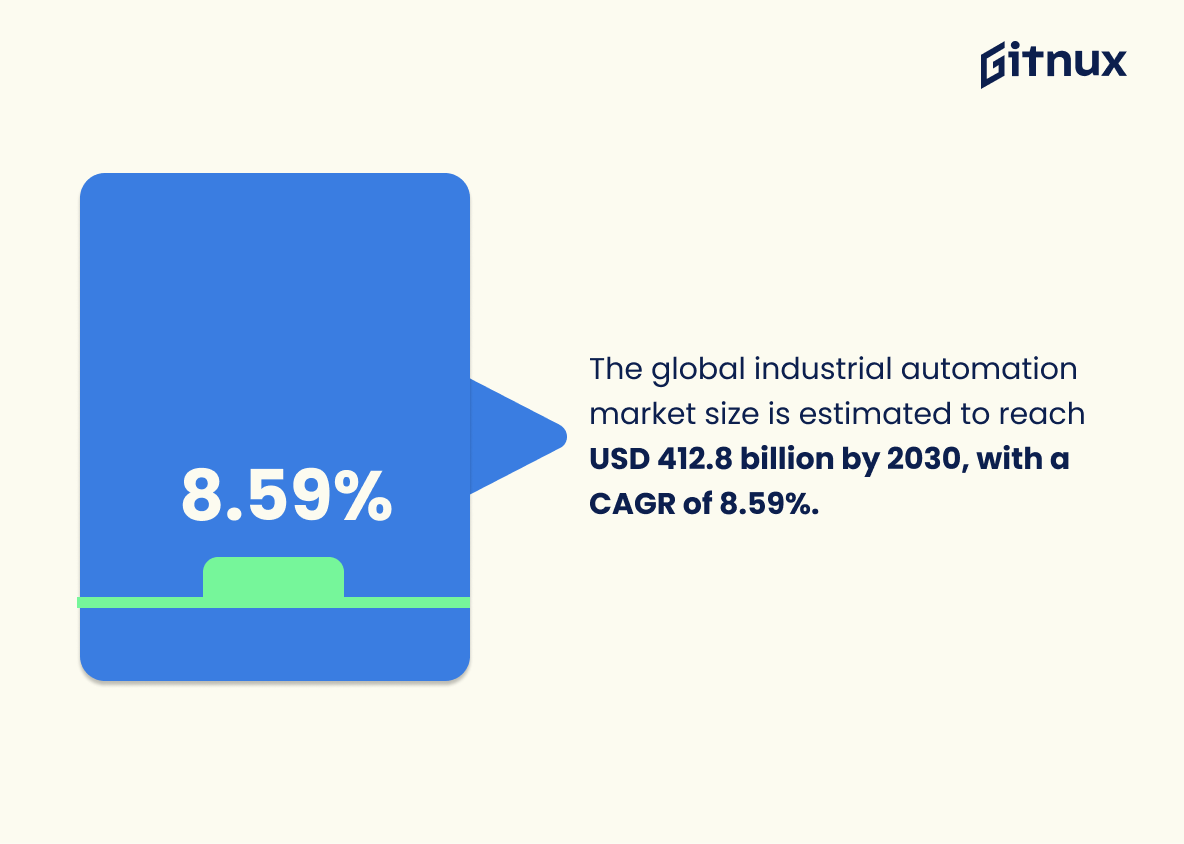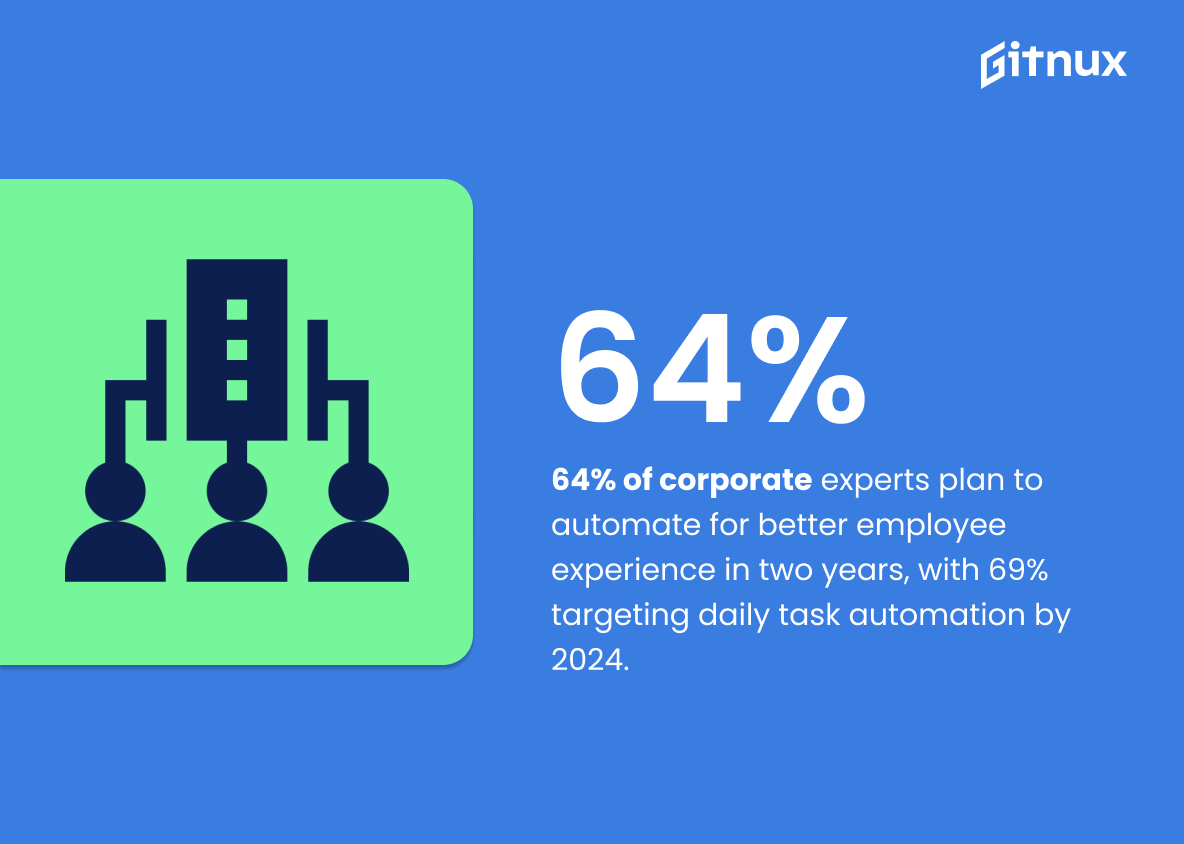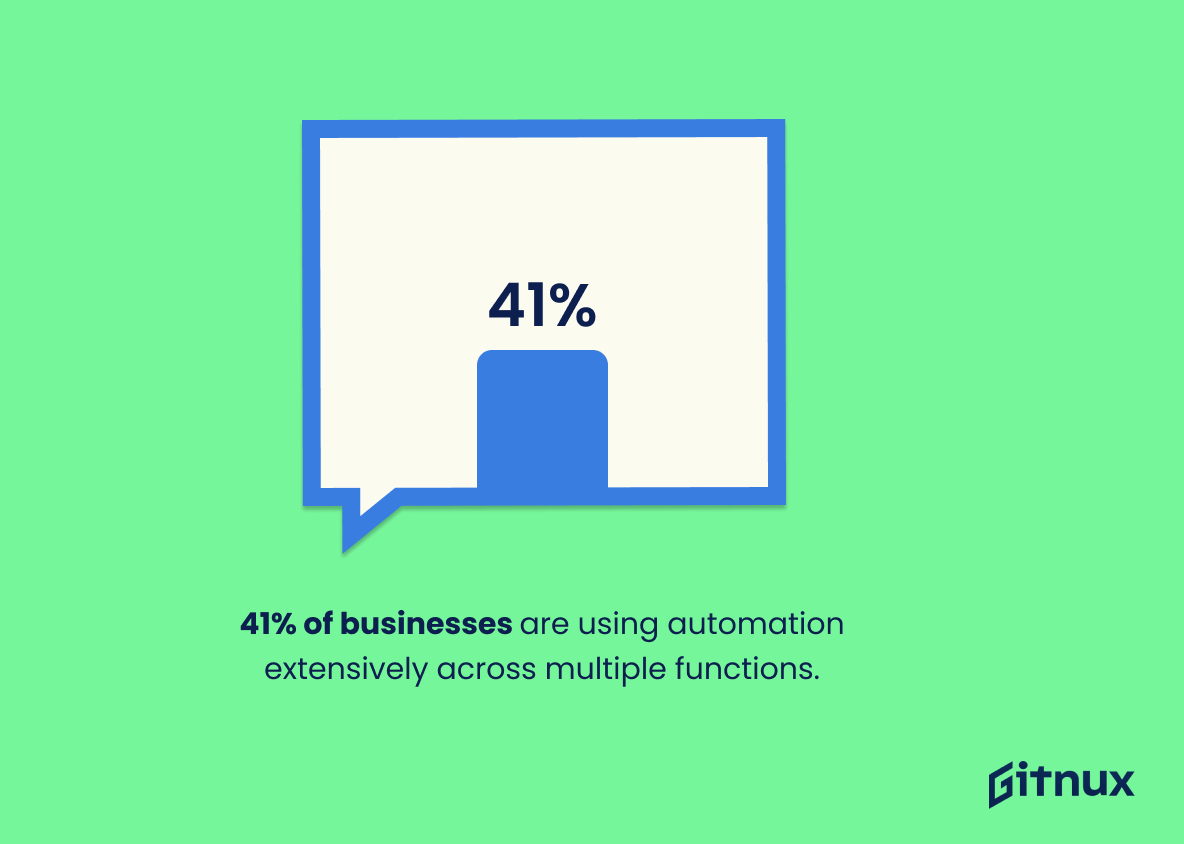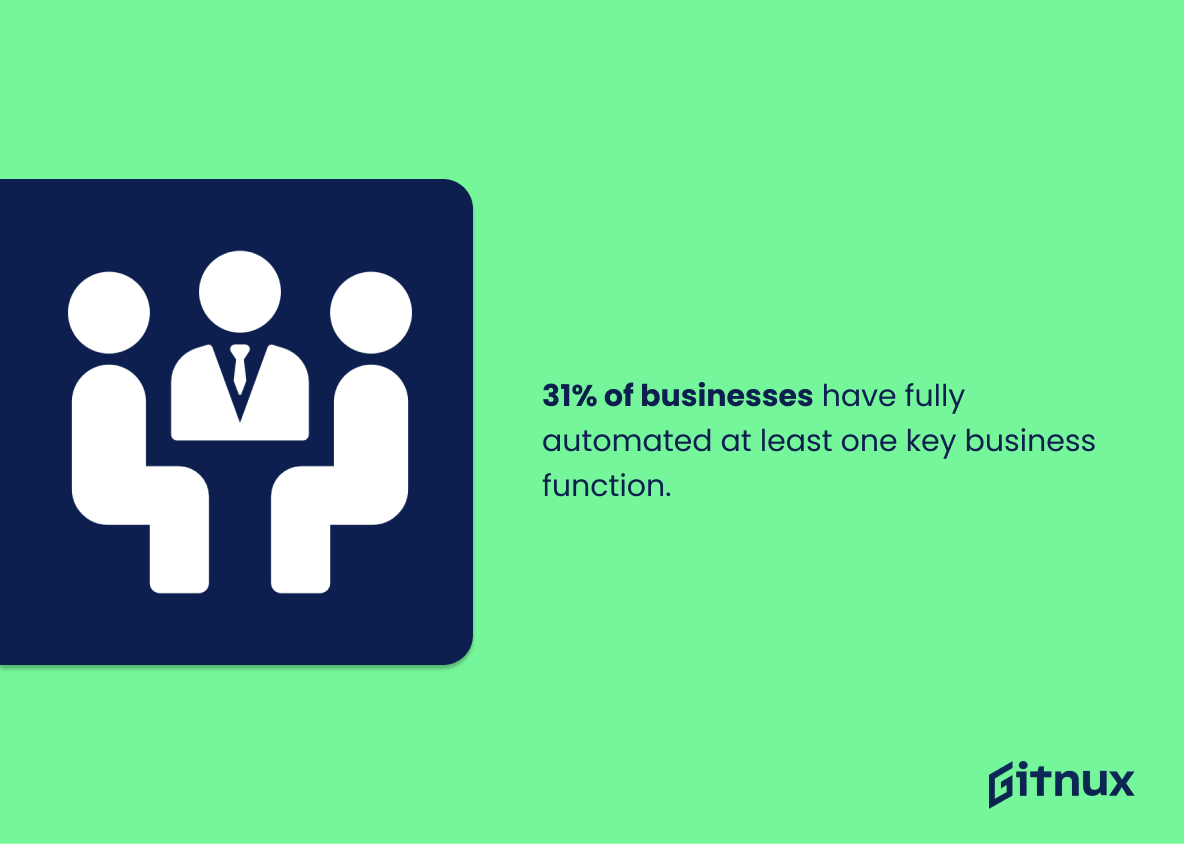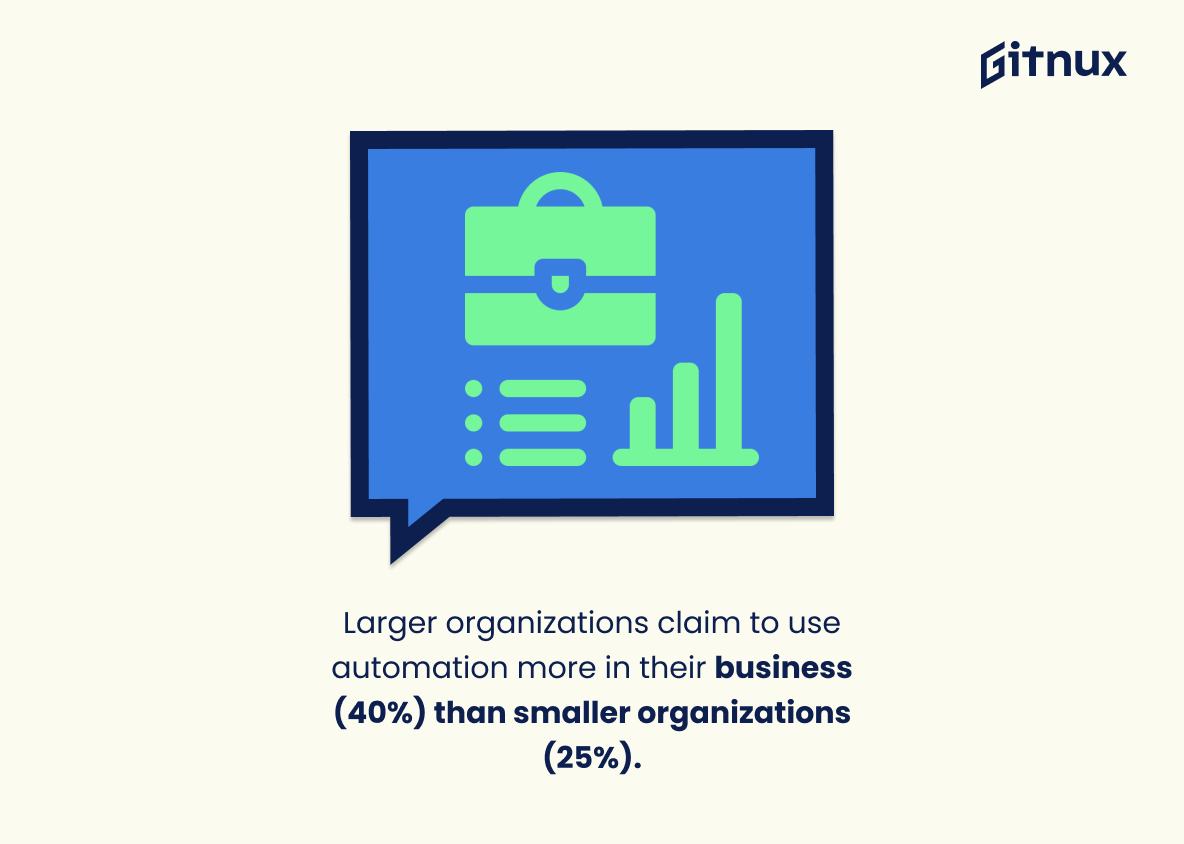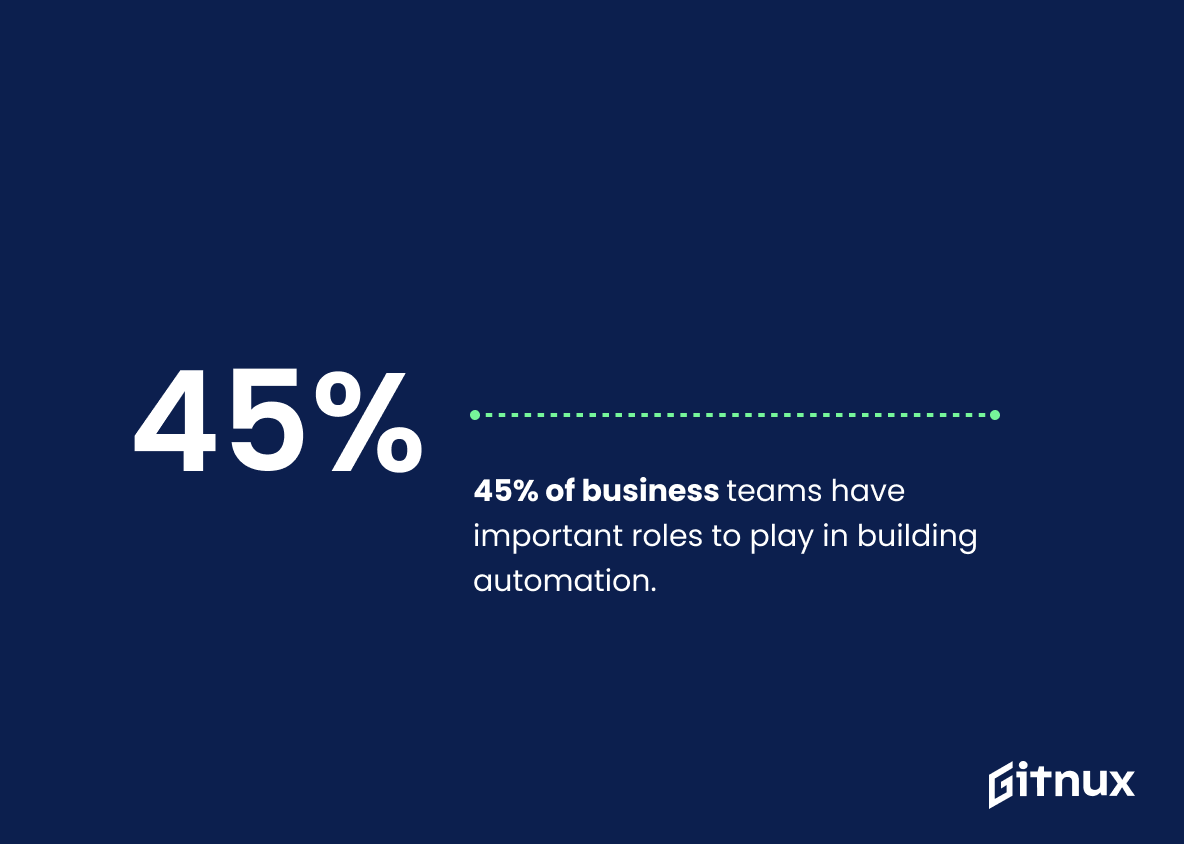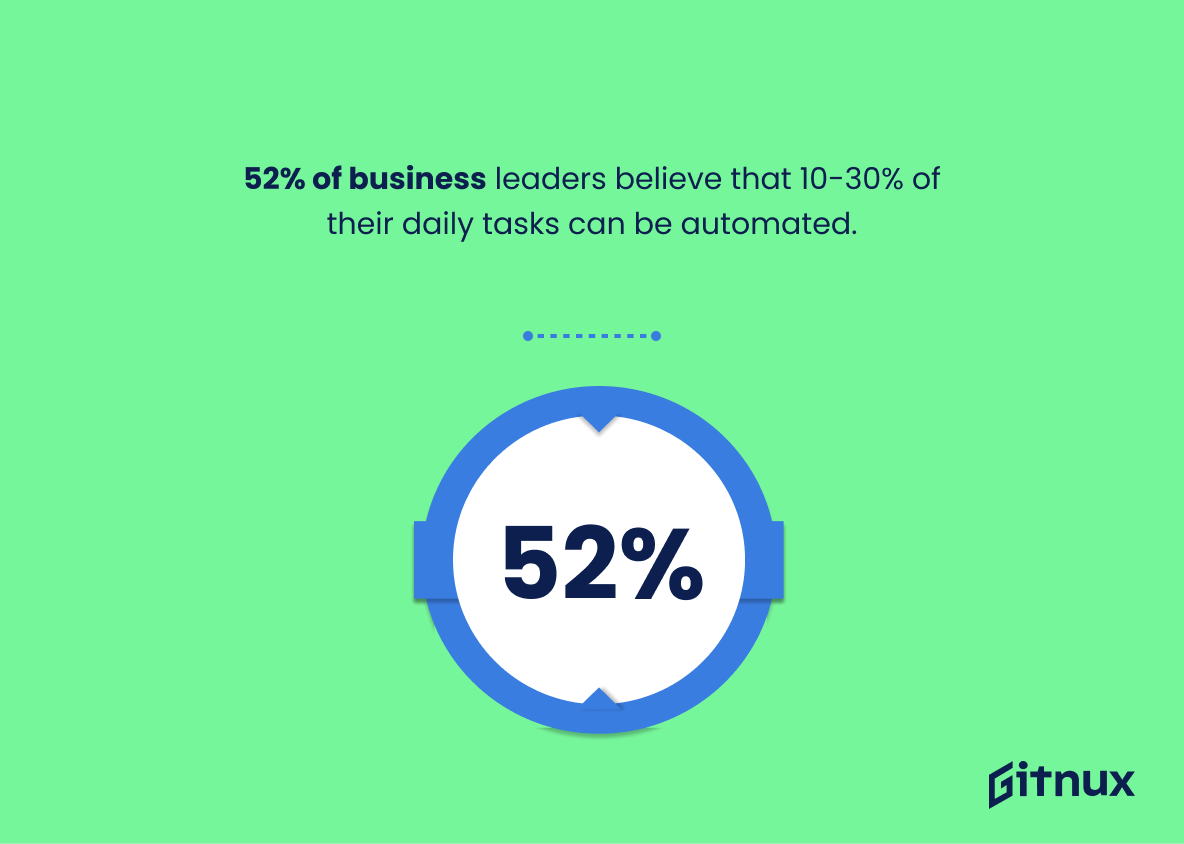Business automation is becoming increasingly popular in the modern business world. Automation has been used to streamline processes, reduce costs, and improve efficiency. As businesses continue to embrace automation, it is important to understand the impact it is having on the industry.
In this blog post, we will look at some key business automation statistics and how it is changing the way businesses operate. We will also discuss the potential benefits and risks associated with automation and how businesses can best utilize it to their advantage.
Business Automation: The Most Important Statistics
The global industrial automation market size is estimated to reach USD 412.8 billion by 2030, with a CAGR of 8.59%.
41% of businesses are using automation extensively across multiple functions.
Business Automation: Statistics Overview
66% of organizations are currently implementing or interested in automation, a 9% increase from 2018.
This statistic is important because it shows that more organizations are embracing automation technologies, which suggests that automation is becoming increasingly important for businesses. This indicates that businesses should prioritize automation to remain competitive.
90% of executives expect their automation investments to improve the capacity of their workforce over the next 3 years. 51% of automation initiatives aim to boost business efficiency, and 42% of business leaders agree that automation minimizes human error and accelerates the completion of repetitive tasks.
This statistic shows that automation is seen as a beneficial investment by executives, as it can improve the capacity of the workforce, boost business efficiency, and minimize human error. This suggests that automation is a worthwhile investment for businesses, as it can lead to improved productivity and employee satisfaction.
24% of jobs requiring a bachelor’s degree and 55% of jobs with lower prerequisites have the potential to be automated in the US, particularly in the transportation, warehousing, and manufacturing industries.
This statistic matters in the context of Business Automation Statistics because it highlights the potential for automation to drastically reduce the number of jobs in certain industries. This could have a significant impact on the US economy, as well as the job market, as many people may be unable to find work due to increased automation.
The global industrial automation market size is estimated to reach USD 412.8 billion by 2030, with a CAGR of 8.59%.
This information demonstrates the potential for growth in the industrial automation market. It also shows that automation is becoming increasingly popular and accepted by consumers, which can lead to increased efficiency, production, and cost savings. Additionally, it highlights the importance of reducing human intervention in the manufacturing process, which can lead to increased safety and improved quality control.
97% of organizations believe that business process automation is essential for digital transformation, while 90% of employees feel burdened with repetitive tasks and 68% of employees suffer from work overload.
It highlights the need for automation in order to reduce costs, human errors, and processing time. As well as to alleviate the burden of repetitive and boring tasks from employees. Automation of business processes can also help to improve efficiency and scalability, making it an essential tool for digital transformation.
64% of corporate business experts expect to implement automation to boost employee experience in the next two years, with 69% of daily management tasks expected to be automated by 2024.
This statistic shows the increasing trend of automation in the workplace and the importance of understanding which processes can be automated for a more efficient working process. It also highlights the need for companies to stay up to date with automation technology in order to remain competitive in the market.
41% of businesses are using automation extensively across multiple functions.
This indicates that automation is becoming more commonplace and is being used to improve efficiency and productivity. It also shows that businesses are recognizing the value of automation and are willing to invest in it. This is important for businesses to understand in order to stay competitive in the market.
Automation can free up to 3 work hours a day for regular employees and 9 additional weeks of productive work time for management, leading to increased efficiency and productivity.
Check out our latest Workplace Productivity Statistics
This statistic demonstrates the potential of automation to increase efficiency and productivity in organizations. Automation can free up time for employees and managers, allowing them to focus on higher-value tasks and freeing up resources for other activities. This can lead to increased efficiency and productivity, which can ultimately result in improved organizational performance.
Digital process automation (DPA) was valued at 7.8 billion USD in 2019 and is poised to reach 16 billion USD by 2025.
This statistic matters because it shows the growing demand for automation and the potential for businesses to benefit from automation solutions and services, such as lowering inevitable losses, creating new opportunities, saving costs, and increasing the efficiency of business processes.
43% of businesses plan to reduce their workforce due to technology integration, while 34% plan to expand their workforce due to technology integration.
This statistic is important because it shows that automation technology is having a significant impact on the labor market. It is causing shifts in labor demands and requiring some workers to transition into different skill sets. This highlights the need for businesses to be aware of the potential impacts of automation technology on their workforce and to plan accordingly.
31% of businesses have fully automated at least one key business function.
This statistic demonstrates how businesses are utilizing automation to improve efficiency and lower costs. Automation can help businesses streamline processes, reduce errors, and improve customer service. It also allows businesses to focus on higher-level tasks and activities instead of mundane, repetitive tasks. Automation can also provide a competitive edge by allowing businesses to react quickly to customer demands and market trends.
Larger organizations claim to use automation more in their business (40%) than smaller organizations (25%).
This statistic shows that larger organizations are more likely to use automation in their business operations. As larger organizations are more likely to leverage automation in their operations, it is important to understand how this impacts their overall performance.
45% of business teams have important roles to play in building automation.
This number highlights the critical importance of business teams in the development and implementation of automation technology. Business teams play an integral role in ensuring that automation is designed and implemented to meet the needs of the organization and ensure a successful outcome.
85% of business leaders believe that automation of their workload will enable them and their employees to focus more on strategic goals that are important for business success. 78% of business leaders also believe that automating tasks in the organization increases the productivity of all stakeholders.
This statistic shows that business leaders recognize the value of automation and its ability to help them and their employees achieve strategic goals more efficiently. Automation also has the potential to increase productivity and reduce costs, allowing businesses to focus more on innovation and growth. By investing in automation, businesses can stay ahead of the competition and remain competitive in today’s changing market.
52% of business leaders believe that 10-30% of their daily tasks can be automated.
It means that business leaders understand the potential of automation to help streamline and improve their operations. Automation can reduce costs, increase efficiency, and free up valuable time, allowing business leaders to focus on more strategic tasks. Automation can also help reduce errors and increase accuracy, which can lead to greater customer satisfaction and improved business results.
90% of employees feel burdened with repetitive and boring tasks that can be easily automated. 81% of workers can reach breaking point if they do not tap automation to handle volumes of work.
This statistic highlights the need for businesses to incorporate automation into their processes in order to reduce the burden on their employees and help them manage their workloads more efficiently. Automation can help to alleviate some of the mundane tasks that employees have to do, freeing up more time for them to focus on more creative and engaging tasks. Automation can also help to reduce errors, speed up processes, and improve customer service.
31% of businesses surveyed are highly concerned about job loss that automation may trigger.
This statistic shows that a significant number of businesses are aware of the potential job losses that automation may cause and are taking steps to address it. This could include re-training employees, investing in new technology, or creating new jobs that could arise from automation. By addressing the issue, businesses can help ensure that their workforce is prepared for the future, and that automation does not put their employees’ jobs at risk.
Conclusion
In conclusion, business automation statistics strongly suggest that automation is becoming increasingly popular in the business world. Automation can help businesses save time, money, and resources, while also increasing efficiency and productivity.
Automation can also help businesses stay competitive in the market and improve customer service. As automation technology continues to evolve, businesses should consider investing in automation to stay ahead of the competition and maximize their profits.
References
McKinsey: “The imperatives for automation success”, cited February 2023. (Source)
Cflow: “Compelling Workflow Automation Statistics for Data-driven Business Decisions”, cited February 2023. (Source)
Quixy: “61+ Workflow Automation Statistics and Forecasts you can’t miss!”, cited February 2023. (Source)
Precedence Research: “Industrial Automation Market – Global Industry Analysis, Size, Share, Growth, Trends, Regional Outlook, and Forecast 2022-2030”, cited February 2023. (Source)
Imaginovation: “30+ Statistics That Prove Why Companies Need to Embrace Business Automation in 2023”, cited February 2023. (Source)
Levity: “5 Major Reasons Why Every Business Benefits From Automating Processes”, cited February 2023. (Source)
Markets and Markets: “Digital Process Automation Market”, cited February 2023. (Source)
Frevvo: “75+ Key Business Automation Statistics for 2021”, cited February 2023. (Source)
ZipDo, cited June 2023: Business Automation Statistics
